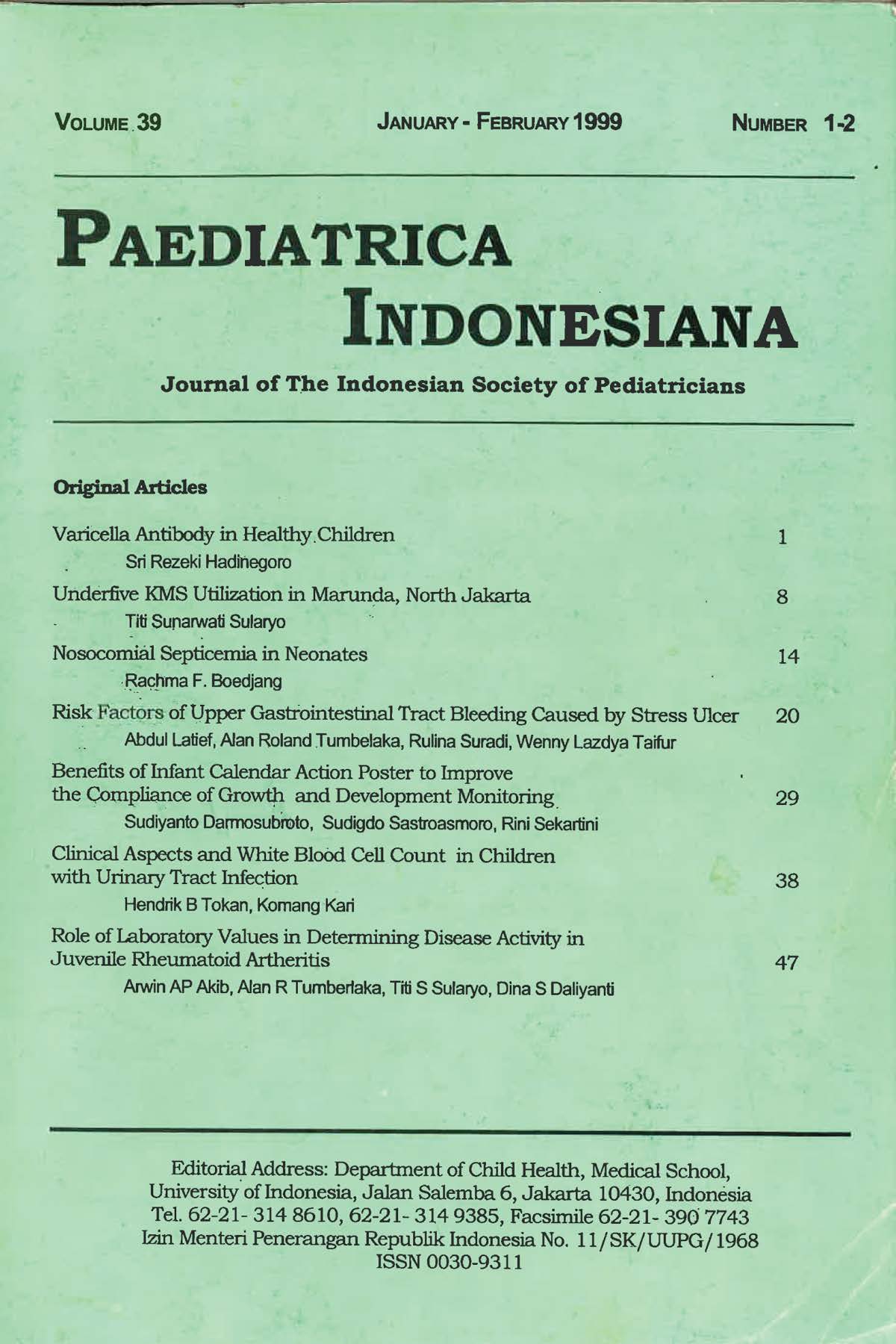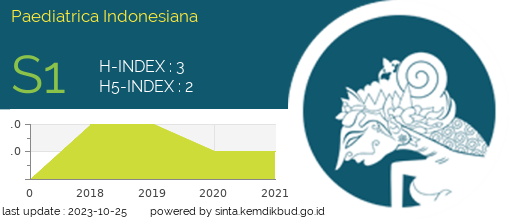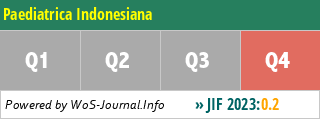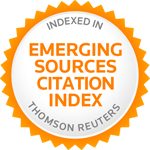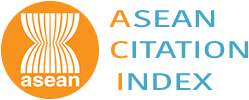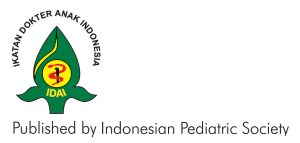Role of laboratory values in determining disease activity in juvenile rheumatoid arthritis
Abstract
Juvenile rheumatoid arthritis (JRA) is an autoimmune joint disease characterized by supression of disease activity. To confirm clinical criteria in determining disease activity, several laboratory parameters, such as haemoglobm level, leucocyte count, thrombocyte count, erythrocyte sedimentation rate (ESR), C reactive protein (CRP), serum concentration of immunoglobulin and complement are considered important. This retrospective study was undertaken to find out whether the same correlation was also existed our patients trend. Bivariate analysis was used to study 113 episodes of disease activity in 46 patients with JRA from October 1983-0ctober 1997. Each episode of disease activity was clinically classified as either active or inactive according to American Rheumatism Assocation (ARA). It was found that CRP and disease activity correlated significantly (p=O.04). The disease activity was not associated with anemia, leukocytosis, thrombocytosis, increased level of ESR, high serum immunoglobulin concentration, or increased level of complement. Heterogenous origin in 3 types of IRA and limited study subjects may affect these results. In conclusion, besides clinical judgment of disease activity, CRP can be added and used as an objective measure of disease activity.
References
2. Bull BS, Westengard JC, Smith PF, et al. Ranking of laboratory tests by consensus analysis. Lancet 1986; 16:377-80.
3. Felson DT, Anderson J.J, Meenan RF. Time for changes in the design, analysis, and reponing of rheumatoid arthritis clinical trials. Arthritis Rheum 1990; 33: 140-9.
4. van der Heijde DMFM, van', Hoff MA, van Riel PLCM, et al. Judging disease acitivity in clinic in practice in rheumatoid athritis: flrst step in the development of a disease activity score. Ann Rheum Dis 1990; 49:916-20.
5. Kizwan JR, De saintonge DMC, Joyce CRB, et al. Clinical judgment in rheumatoid arthritis. II. Judging current disease activity in clinical practice. Ann Rheum Dis 1983; 42:648-5l.
6. Kirwan JR, Chaput de samtonge OM, Joyce CD, el al. inability of rheumatologists to describe their true policies for assessing rheumatoid arthritis. Ann Rheum Dis 1986; 45: 156-6l.
7. Kvien TK, HoyeraaJ HM, Sandstad B. Assessment method of disease activity in juvenile rheumatoid arthritis - evaluated in a prednisone/placebo double-blind study. J Rheumatol1982; 9:696-702.
8. Fe1son DT, Anderson JJ, Boers M, et al. The American college of rheumatology preliminary core set of disease activity measures for rheumatoid arthritis clinical trials. Arthritis Rheum 1993; 36:729-39.
9. Schaller SG. Juvenile rheumatoid arthritis. In: Behrman, ed. Nelson textbook of pediatrics: 14th ed. Philadelphia: Saunders, 1992; 612-21.
10. White P. Juvenile chronic arthritis. In: Klippel JH, ed. Rheumatology: 13th ed. Toronto: Mosby, 1994; 171-217.
11. Koerper MA, Stempel DA, Dallman PRo Anemia in patients with juvenile rheumatoid arthritis. J Pediatr 1978; 92:930-3.
12. Vreugdenhill G, Wognum AW, van Eijk HG, et al. Anaemia in rheumatoid arthritis: the role of iron, vitamin B 12, and folic acid deficiency, and erythropoetin responsiveness. Ann Rheum Dis 1990; 49:93-8.
13. Cassidy JT. Juvenile rheumatoid arthritis. In: Kelley WN, Ruddy S, eds. Textbook of rheumatology:
5th ed. Atlanta: Saunders, 1997; 1207-24.
14. Akib AAP. Pengalaman panataJaksanaan JRA di Bagian lKA FKUI/RSCM. In: Matondang CS, Akib AAP, eds. Strategi pendekatan k1inis berbagai penyakit alergi dan irnunologi pada anak. Naskah Lengkap Pendidikan Kedokteran Berkelanjutan IKA FKUI/ RSCM XXXVI: 10-11 November 1995. Jakarta: Balai Penerbit FKUI, 1995.
15. Pachman LM. Juvenile rheumatoid arthritis. In: Koopman WJ, ed. Arthritis and allied conditions: 13th ed. Toronto: Williams & Wilkins, 1997; 1155-77.
16. Brewer EJ. Pitfalls in the diagnosis of juvenile rheumatoid arthritis. Pediatr Clin North Am 1986; 33:1015-31.
17. Kushner I. C-reative protein in rheumatology. Arthritis Rheum 1991; 34: 1065-8.
18. Deodhar SO. C-reactive protein: the best laboratory indicator available for monitoring disease
activity. Cleve Clin J Med 1989; 56: 126-30.
Authors who publish with this journal agree to the following terms:
Authors retain copyright and grant the journal right of first publication with the work simultaneously licensed under a Creative Commons Attribution License that allows others to share the work with an acknowledgement of the work's authorship and initial publication in this journal.
Authors are able to enter into separate, additional contractual arrangements for the non-exclusive distribution of the journal's published version of the work (e.g., post it to an institutional repository or publish it in a book), with an acknowledgement of its initial publication in this journal.
Accepted 2017-02-10
Published 1999-02-28

